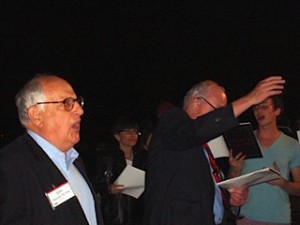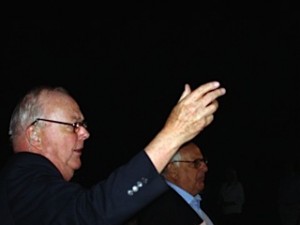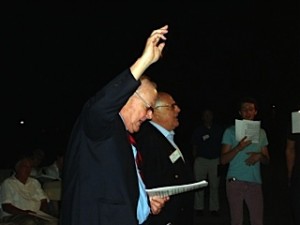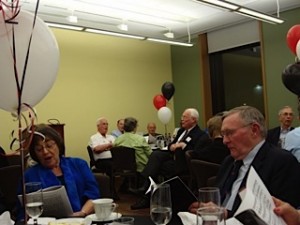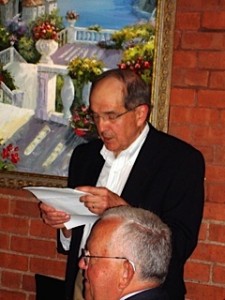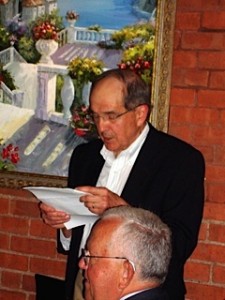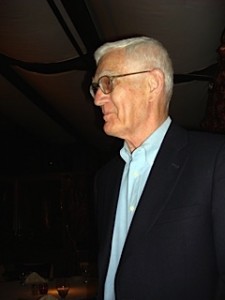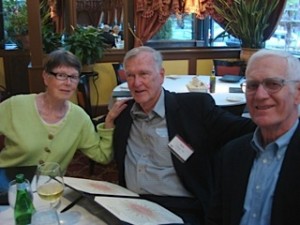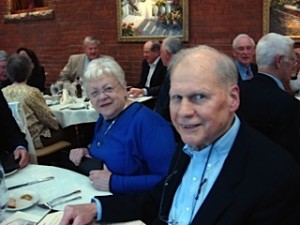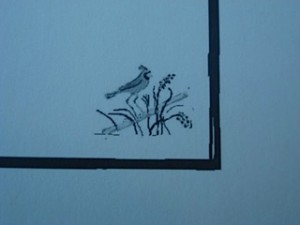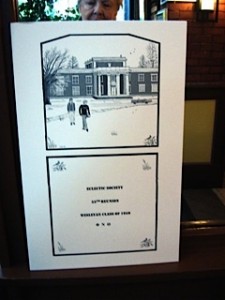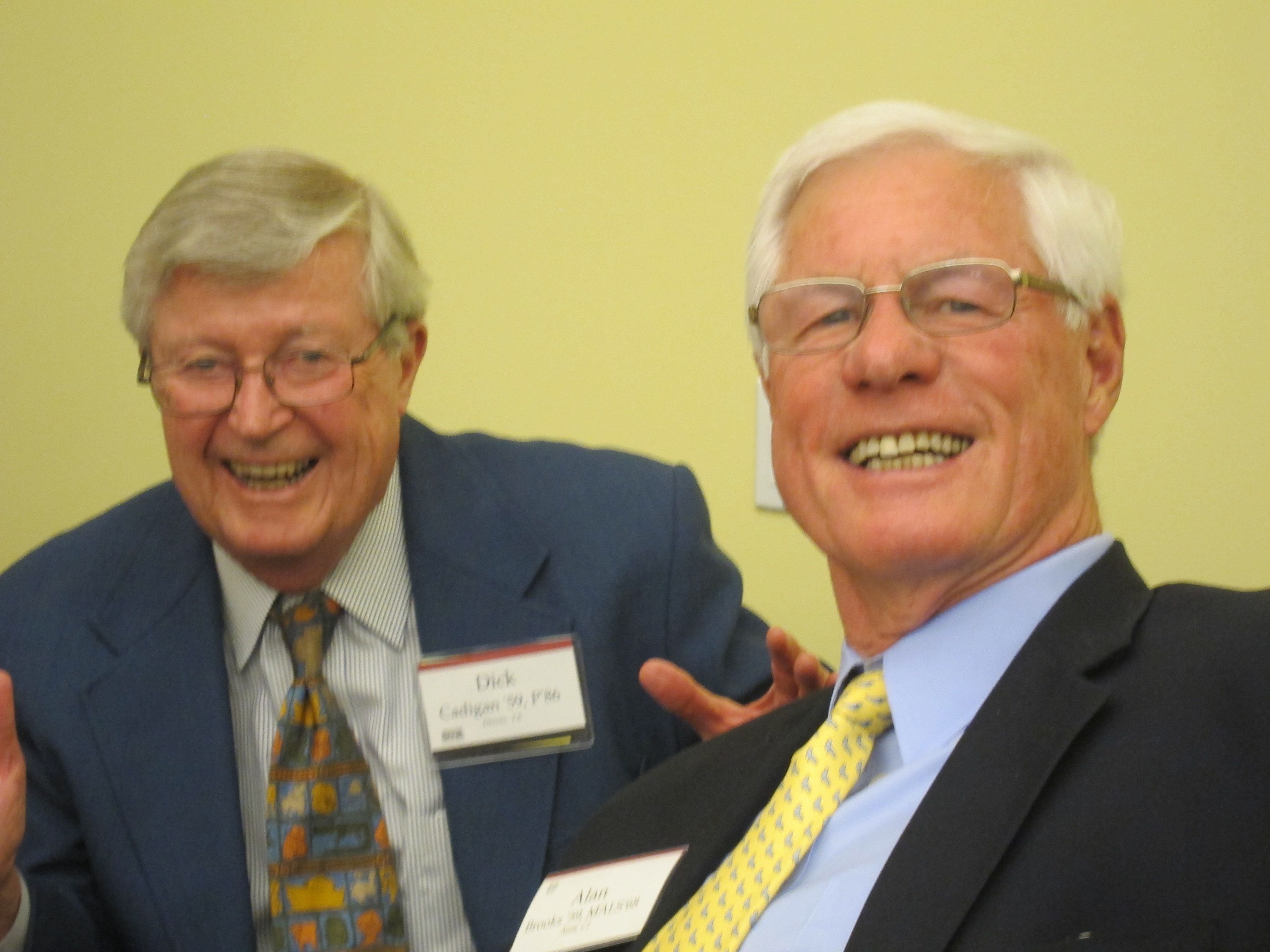The Great Class of 1959 continues to be active and adventuresome!
We will start with a special “shout out” to members of Eclectic and other Wesleyan representatives. About five years ago, Eclectic alums from our class (and others) expressed dismay at the condition of one of the great buildings on campus. Designed by L. H. Bacon, architect for the Lincoln Memorial and several other Wesleyan buildings, the Eclectic House had fallen into a state of disrepair and near ruin. Bing Leverich took up the torch, organized what became the “gang of 10” and persuaded the University to meet and discuss the situation and possible solutions. After several years of hard work and productive negotiations, the beginnings of a solution are emerging, involving current student members, the University, and the alumni.
At the same time, Bill Moody applied for and received both Connecticut and National Historic Places designations for the building. These designations helped change the nature of the debate and put matters on a very constructive course. Many have worked hard to get to this point, but for this edition The Great Class of ’59 salutes Bing and Bill.
Your scribes have heard from many other classmates and will insist on hearing from more. Alan Brooks writes that he had been pulled from retirement two years ago to direct the year-long 125th anniversary celebration of Westminster School, from which he graduated in 1955 and at which he taught for 52 years. He has retired again and thinks it will stick this time. He attempts to delay the results of age by competing with weights in senior events and coaching the sport in the spring.
Bill Moody and wife Janet have moved into “winter quarters” at D.C.’s Knollwood, a retirement community for military officers, although they retain their main residence in Incline Village, Nev. At Knollwood they have reconnected with a couple Bill knew in 1966 at the U.S. Naval Activity in Edzell, Scotland, validating again the concept of the “small world.”
We heard from Hugh Lifson, who reports a life-changing month. His wife of 52 years died after a protracted bout with cancer, while, at the same time, he is getting ready for a big show of his work at the Hudson River Gallery in Iowa City and another show later this winter. We are sorry for Hugh’s loss but having his artwork to lean on is a huge help. Hope the shows are great successes!
Ellen and Herb Steiner report visiting with Sibyl and Tim Martin at their family farm in Connecticut. All is well there, Herb having been an usher at their wedding. Tim is an architect, their two sons are architects and they both married architects. They recently saw Diane and Joe Vander Veer in Philadelphia for some art watching and they also see Amanda and Bob Ogren. Herb and Ellen will spend the winter in Delray Beach.
Owen Tabor writes: “Delighted you and Skip have taken the reins…Bill Moody and others did a fine job with ‘the Few, the Proud…’ It seems, John that you appeared before me somewhere in the last 20 year, Memphis for a wedding, perhaps? [It certainly was, and Owen was in his kilts, playing the bagpipes for the bride and groom in immense style, as always—see below]. Wesleyan ties have been thin to non-existent, and a recent denial of a granddaughter’s application didn’t help. She is happily settled as a freshman at UVA. Anyhow, I am grateful for those years long past. I am retiring from my orthopedic surgery practice, (office only for the last 10 years), leaving my oldest son in charge of a six man group. Four married children, 13 grands, married 52 years to Margaret, a Conn. College girl.
“The wedding in which I was kilted was, I believe, our daughter Mary, marrying Rob Engel from New Jersey.” The couple had originally met at Princeton, but re-met 10 years later, in NYC while she was with the Times. “They are married, now, with four children, and living in Charlotte, N.C. Rob was a Deerfield guy, too, and still with two younger pre-college guys, one or both may go that way. Oldest boy doing gap year at King’s Academy in Jordan, a Deerfield model, and plans to go to Middlebury next year, he thinks. Rob and Mary lived in London for three years, youngest born there, and during those years Margaret was a gold medallion flyer on Delta! Cheers!”
Lastly we heard from Dick Cadigan about a “near miss” with their twin 6-year-old grandsons. While it will take a long time, Dick believes all will come right after they were jammed into a wall by a 90-year-old driver using forward instead of reverse. Dick is a believer in mandatory driving tests for all over 80, probably a very good idea.
Looking forward: Mark your calendars for May 22, 23, and 24, and plan to attend our 55th Reunion; when the Reunion questionnaire arrives, fill it out and return it; send your scribes notes on your activities and whereabouts. Let’s keep the Great Class of ’59 together!
Skip Silloway and John Spurdle
ssillow@gmail.com; 801-532-4311;
jspurdle@aol.com; 212-644-4858

